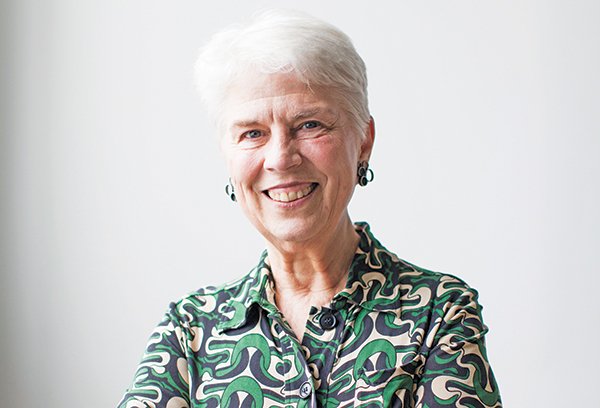Anita Davis’ most recent project is Esse, a museum showcasing her purse collection. The museum’s permanent exhibit looks at purses as expressions of the women who carried them, featuring not only the bags themselves, but also their contents, along with photos and informational placards to give some history of the time period. Everything about the museum, from decor and design to the detail in each display, is striking.
Q: Esse is a museum devoted to your collection of 3,000 purses, only 300 of which are displayed in the exhibit. Why are purses so special?
A: There are so many different materials they are made of — it’s kind of like art. When you get them all together, there’s metal mesh, and there’s Bakelite and Lucite and straw ... just so many different things that can keep your interest.
Each of them tell a story — some of them have a really nice scent inside, and sometimes they smell like smoke. It tells a lot about a woman if you investigate the purse. And you don’t really find, when you go out looking for purses, the things that used to be inside them. I always enjoy going to flea markets where there are lots of vendors, and lots of little booths, and it is so fun to just see [a purse] and look at it. But there aren’t many contents in those purses, because the vendors of course pull that stuff out and you have to find that. So it takes a special effort to find the contents as well as the purses. There are all kinds of little treasures that tell a story.
Q: Where does the name Esse come from?
A: Esse in Latin means “to be.” The purse holds the essence of the woman carrying it. The purse is the outside expression of a woman’s essence.
Q: What did the building which now houses the museum used to be?
A: The Esse building most recently [housed] Stageworks since the 1980s. Before that, early on it was a candy distribution warehouse. The team that worked on the making of the museum was Kwendeche (architect and artist), Steven Otis, Sara Drew, Laura Hardy and myself.
Q: Most of the exhibit is presented by decade from 1900 to 1999, except for the section that features bags suspended from the ceiling above a circle of mannequins. Tell me about that display.
A: There’s one part of the exhibit that’s a little different — it’s about women sitting around, thinking about purses they’ve had in their past, or about other women, their grandmothers or their aunts or whoever who might’ve made an impact on them. And it’s really to elicit other people’s thoughts — “Oh yeah, I remember going to that Baylor Game, and I took that purse.”
We tried to pick different [purses] from different eras that people would kind of relate to. It’s all about stories — you can either pick up stories from this, or you can remember your own stories, or you can make up your own stories.
Q: Of all the decades of purses in your museum, do you have a favorite?
A: The decades that I love are the 1920s and the 1960s.
The ’20s were a time that they started experimenting with new materials for handbags, so there was a lot of variety.
The ’60s was the era of my teens and early womanhood, so I loved the new styles that we embraced — the box purses, the Madras, the bamboo-handle leather bags, the fishing creel bags.
Q: Esse isn’t your first project on South Main Street. What was your inspiration for creating The Bernice Garden?
A: I was really interested in the green movement, and I went to a national Main Street meeting in Seattle. Then I went to a Green Roofs meeting that was in Boston, and I was really trying to find out how I could make a difference in my own life — not just by recycling or whatever — but it seems like there were other ways you could make a difference with the green movement.
One of the big things is to slow down traffic, have places people can meet and greet, and have destinations where they can walk. So that’s kind of how that came about. I bought the building in 2004, the one with Boulevard Bread Co. and Ashley Ann’s, and then it took me three years for that to kind of cook in my brain. Then the garden was built in 2007, with landscaping and all that, and then the roof was finished in 2011.
Q: Any ideas for the future of this area?
A: I don’t really have another plan, it really hasn’t come from a great vision or anything because I never really planned to buy the first building ... it’s just come into fruition in the way things work out sometimes.
Today we’ve had a cornbread [festival] meeting, we’ve had an Esse meeting about how to get people in here, so that’s two meetings, and it filled up the whole morning! Then we’ll have a sculpture garden party in September. All the things we have going in the garden is quite a bit, so I don’t really have any future plans ... but I know other people will.
Esse Purse Museum is located at 1510 S. Main St. in Little Rock. Museum and gift shop hours are Tuesday through Sunday, 11 a.m. to 4 p.m. For more information call (501) 916-9022 or visit essepursemuseum.com.
